Multiple faculty members who belong to the prestigious National Academy of Sciences (NAS) call the University of Missouri home. NAS members are elected based on their original scientific research, and membership is considered one of the highest professional honors. Members include Albert Einstein, Thomas Edison, David Blackwell, Steven Chu and Jennifer Doudna.
Meet the MU professors who have joined their ranks.
James Birchler
Biological Sciences
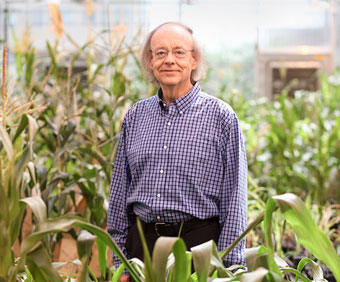
James Birchler, a Curators’ Distinguished Professor of Biological Sciences, is among the world’s most highly regarded cytogeneticists — scientists who study the structure and function of cells, especially the chromosomes. Birchler created a technique that allows scientists to break down and engineer small parts of a chromosome. In the future, this technique could allow scientists to introduce multiple disease-resistant and agronomic traits to plants.
Birchler also developed a widely used technology to accurately visualize genes and chromosome features. He made major contributions toward understanding how plant and animal gene expression changes in response to the number of genes present. He was first to recognize that the dosage interaction of “gene regulators,” which control the expression of genes, is far more important than “structural genes” — the genes that make up a protein for the eventual expression pattern. Birchler co-founded the “gene balance hypothesis,” which predicts how genes behave during evolution. The hypothesis has the potential to impact future research in medicine, agriculture and biology.
Birchler joined the MU faculty in the Division of Biological Sciences in 1991. In 2002, he was named a Fellow of the American Association for the Advancement of Science. In 2007, Northeast Normal University of China gave Birchler the Award for Excellence in Academic Achievements. He became a National Academy of Sciences member in 2011.
John Boyer
Plant Science and Technology
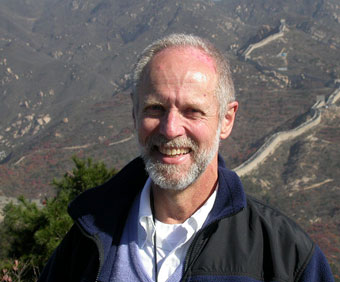
John Boyer was raised on a small beef cattle farm that he and his brother operated for six years and where he remains active. Because the farm is subject to severe drought on average every three years, he devoted his career to understanding how plants perform in these conditions and whether their performance can be improved.
His work focuses on crop growth, photosynthesis and grain production using tools of biochemistry, biophysics and molecular genetics. His discoveries include the biochemistry necessary to reverse grain losses during drought and the specific chemical reactions controlling plant growth rates.
Boyer was elected to the National Academy of Sciences in 1990 and the Australian Academy of Sciences in 2005. He has conducted research at the University of Illinois, Texas A&M University and the University of Delaware.
Boyer is a distinguished research professor in the University of Missouri College of Agriculture, Food and Natural Resources and is a member of the internationally recognized Interdisciplinary Plant Group (IPG).
NAPOLEON CHAGNON (1938-2019)
Anthropology
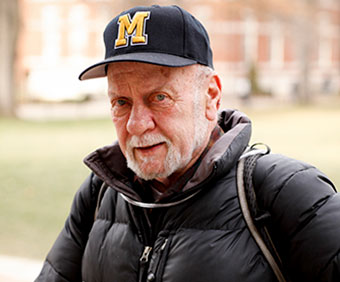
Napoleon A. Chagnon was elected to the National Academy of Sciences in 2012 and joined the MU Department of Anthropology in 2013. He was known for his genealogical research, his contributions to evolutionary theory in cultural anthropology and his work in the study of warfare.
Chagnon became a controversial figure in the 1960s for his portrayal of the Yanomamö people of South America, whom he first encountered in the Amazon jungle in southern Venezuela in 1964. The cultural anthropologist’s long-term ethnographic fieldwork with the Yanomamö led him to challenge the commonly held idea that indigenous peoples are fundamentally nonviolent before contact with modern societies and white imperialists. His studies documented homicide, infanticide and other violence among the Yanomamö, who were isolated from outside cultures. Chagnon’s 1968 book Yanomamö: The Fierce People is the bestselling anthropological text of all time. Teaming up with ethnographic filmmaker Tim Asch, he produced a series of more than 20 ethnographic films documenting the Yanomamö. Chagnon’s life’s work was documented in his 2013 scientific memoir Noble Savages: My Life Among Two Dangerous Tribes—the Yanomamö and the Anthropologists.
Before joining MU as a Distinguished Research Professor and Chancellor’s Chair of Excellence, Chagnon spent more than a decade outside academia. He retired from the University of California–Santa Barbara as a professor emeritus in 1999. In 2010, he received the Lifetime Achievement Award from the Human Behavior and Evolution Society.
Jack Colwill
Medicine

In 1972, when Jack Colwill launched MU’s Department of Family and Community Medicine, it was a new specialty he hoped would help alleviate the shortage of primary care physicians. For 25 years Colwill led the department, elevating it to a ranking among the best in the nation. He began with a half dozen faculty members. Today, there are over 70.
Throughout his career, Colwill has sought solutions to physician-workforce issues. The shortage is especially great in rural areas. Colwill is widely known for his decades-long efforts to expand the health care workforce. He realized that for family medicine to make its mark, departments such as his had to train physicians not only as clinicians but also as teachers and researchers. He built a department that is nationally known for performing all three tasks at a high level. In recognition of his work, Colwill was elected to the National Institute of Medicine in 1989.
Though he has retired from teaching, Colwill still practices medicine, and research remains a priority. In 2010-11, when he was 75, Colwill’s papers were published in the New England Journal of Medicine, in the Annals of Family Medicine and in Health Affairs, a general health-policy journal.
FRED HAWTHORNE (1928-2021)
Chemistry and Radiology
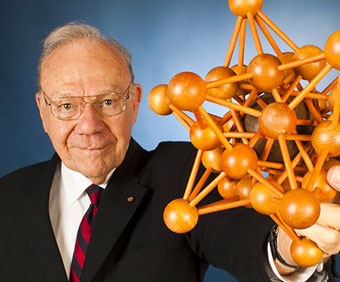
National Academy of Sciences member M. Frederick Hawthorne began his career in the chemistry of boron half a century ago. Little information existed on the topic, but Hawthorne envisioned that boron might become the basis of products including pharmaceuticals and nanomaterials. He set for himself the goal of using boron to cure common cancers in part through boron neutron capture therapy. Results of Hawthorne’s early tests were positive years ago at the University of California, Los Angeles, but Hawthorne lacked access to a source of neutrons and could not conduct clinical trials.
That changed in 2006 when Hawthorne retired from a successful academic career at UCLA and moved his research laboratory to the University of Missouri, lured by a rare range of resources that could help him complete his life’s work. MU has a medical school, a veterinary college and the nation’s largest academic research reactor with a neutron beam line dedicated to boron neutron capture therapy. At MU, Hawthorne served as director of the International Institute for Nano and Molecular Medicine.
In 2009, Hawthorne received the Priestley Medal from the American Chemical Society. In 2012 President Barack Obama awarded him a National Medal of Science, the highest honor bestowed by the United States to scientists.
Michael LeFevre
Medicine
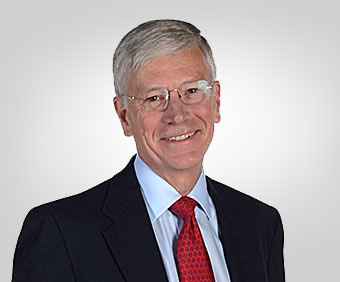
Michael LeFevre, a nationally known expert on health policy, was elected to the prestigious Institute of Medicine in 2011. LeFevre is a lifelong Tiger. He earned a bachelor’s degree in engineering and a medical degree, as well as a subsequent master’s degree, from the University of Missouri before becoming an MU professor and physician. LeFevre heads the clinical activities of the Department of Family and Community Medicine at MU and has held many roles in the institution. As vice chair and director of clinical services for the Department of Family and Community Medicine, LeFevre oversees six practices with more than 110,000 patient visits annually. After caring for patients for nearly 30 years, LeFevre still looks forward to going to the clinic, and he still delivers babies.
A national health-policy leader, LeFevre served as co-vice chair of the U.S. Preventive Services Task Force, whose members study medical problems that affect large parts of the population and make recommendations for preventive care. He has published widely on screening for diseases and events such as hepatitis B, aortic aneurysm, oral cancer, suicide risk, vitamin D deficiency and thyroid dysfunction. He also helped develop national guidelines for the treatment of hypertension.
Blake Meyers
Plant Science and Technology
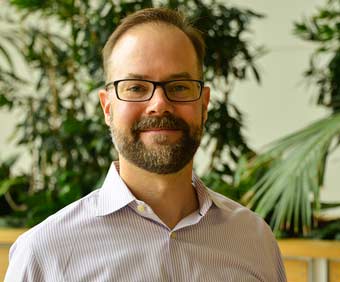
Blake Meyers, a professor of plant science and technology in the MU College of Agriculture, Food and Natural Resources, was elected to the National Academy of Sciences in 2022.
Meyers’ research focuses on the analysis of small ribonucleic acids (RNAs) in plants. His contributions have led to an increased understanding of plant growth and development, including novel mechanisms controlling pollen formation and plant reproduction. His research has had wide application to crop improvement, including the development of new technologies for breeding hybrid crops.
Joining MU in 2016, Meyers is part of a collaborative agreement between MU and the Donald Danforth Plant Science Center. The partnership aims to elevate regional plant science research to address global challenges. Today, Meyers and his team focus on better understanding plant genomes through the type of RNA they produce. His lab uses experimental and computational approaches to study plant reproduction and fertility to enhance yield gains in crop plants.
LINDA RANDALL
Biochemistry
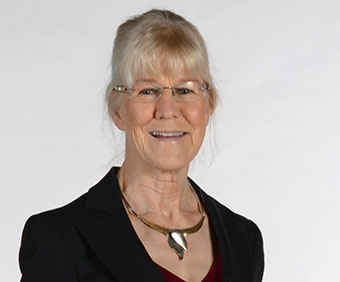
Linda Randall, Professor Emerita of Biochemistry, studies how cells know the destination of their thousands of proteins and how those proteins are put in their proper places. She isolates the “machinery” from the bacterium Escherichia coli, taking it apart and putting it back together to learn what each part does. The process involves special channels through membrane barriers, motor components that provide energy to move the proteins and “chaperones” to guide them. The knowledge gained from bacteria can be applied to all cells, including those in humans. Randall and her research group once performed an interpretive dance to illustrate this process. The performance featured black leotards, theatrical lighting and “molecular music” generated on a synthesizer.
In 1993, the National Institute of General Medical Sciences awarded Randall the Method to Extend Research in Time, or MERIT, Award, which aims to reward long-term investigators whose research competence and productivity are "distinctly superior" and to help them continue that work. She was elected to the National Academy of Sciences in 1997.
Marilyn Rantz
Nursing
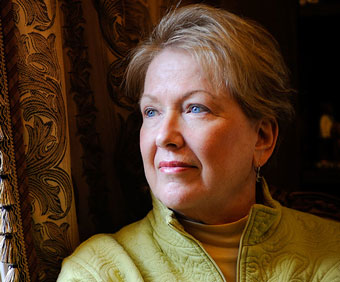
Marilyn Rantz, a Curators’ Professor Emerita of Nursing, has spent more than 30 years working with seniors and conducting research in long-term care and chronic-illness management. A faculty member at the Sinclair School of Nursing since 1992, Rantz is a national leader in the field of senior health care. She was admitted to the Institute of Medicine, the health branch of the National Academies of Science, in 2012.
Rantz has helped implement the national model Aging in Place, which offers care coordination by nurses to enable seniors to receive health care in their residences, rather than being transferred to nursing homes or acute-care facilities. In 2004, she helped found TigerPlace, a Columbia independent-living center dedicated to creating a healthful quality of life for seniors and an environment of cutting-edge research to help seniors live fuller lives.
In 2012, Rantz earned a Nurse Leader in Aging award from the American Academy of Nursing and the John A. Hartford Foundation. The same year, a research team led by Rantz at the Sinclair School of Nursing received a grant of nearly $15 million for research in avoidable re-hospitalizations among nursing home residents. She and her colleagues have received more than $35 million in funding for senior health care research.
R. Michael Roberts
Animal Sciences and Biochemistry

Elected to the National Academy of Sciences in 1996, Chancellor’s Professor Emeritus Michael Roberts is best known for his work on biochemical communication between embryo and mother in cattle and other livestock species. He is particularly interested in how the production of embryonic proteins leads to the maintenance of pregnancy. Roberts and his colleagues also have developed a dependable and sensitive pregnancy test, which is now commercialized for use in the dairy industry. It’s based on a second embryonic protein that enters the mother’s bloodstream as the placenta first forms. Roberts’ current research uses stem cells to create functioning placental cell types for both livestock species and humans. In the human work, he focuses on the common disease of pregnancy known as preeclampsia, which includes a limited invasion of the placenta into the wall of the mother’s womb.
In 2005, Roberts was named to the Scientific American Top 50 list for accomplishments in research and technological leadership. He also earned the 2006 Carl G. Hartman Award from the Society for the Study of Reproduction in recognition of a research career and scholarly activities in the field of reproductive biology.
George P. Smith
Biological Sciences
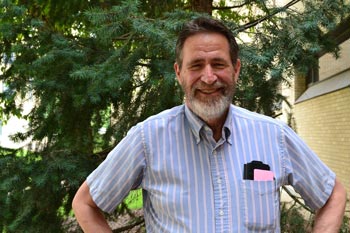
George P. Smith, Nobel laureate and a Curators’ Distinguished Professor Emeritus of Biological Sciences, was elected to the National Academy of Sciences in 2020. He is one of a trio of researchers who won the 2018 Nobel Prize in chemistry. Smith is the first University of Missouri professor to receive a Nobel Prize for research conducted at the university.
Smith developed phage display, which allows a virus that infects bacteria to evolve new proteins. He was particularly focused on applying the phage display to develop vaccines for malaria and other difficult diseases.
Smith joined the faculty of the MU College of Arts and Science in the Division of Biological Sciences in 1975. The University of Missouri Board of Curators appointed him a Curators’ Distinguished Professor in 2000, and he became a professor emeritus in 2015. He has authored and co-authored more than 50 articles in top scientific journals, and he was selected by the American Society of Microbiology for its 2007 Promega Biotechnology Research Award.
Thomas Spencer
Animal Sciences

Thomas Spencer, Vice Chancellor for Research and Curators’ Distinguished Professor of Animal Sciences, was elected to the National Academy of Sciences in 2019. He is recognized internationally as an expert in reproductive biology, focusing on the development and function of the uterus and placenta. Spencer joined the University of Missouri faculty in 2015, attracted by what he calls the “unlimited potential” of a research university of Mizzou’s caliber.
Collaborating across disciplines with other world-class researchers, Spencer uses leading-edge technology to identify genes of cattle that are fertile and high producers. Spencer’s work exemplifies the translation of animal science to human health. Not only does his research have the potential to raise more cattle, but his work also has important implications for understanding pregnancy loss and infertility in humans.
Spencer’s research has been funded extensively by both the U.S. Department of Agriculture and the National Institutes of Health — a testament to the breadth of his expertise. He has published hundreds of articles, presented numerous invited lectures, and has received numerous honors including the Society for the Study of Reproduction Research Award and the American Society for Animal Science Animal Physiology and Endocrinology Award.
In addition to his role as vice chancellor for research, Spencer is the scientific director of NextGen Precision Health and has a joint appointment in the School of Medicine’s Department of Obstetrics, Gynecology and Women’s Health.
